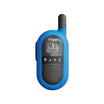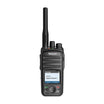Overview:
The police force is pivotal in ensuring community safety and upholding law and order. The necessity for secure and efficient communication is paramount for police officers who are often dispersed across different locations. Enhanced communication tools bolster rapid response and effective coordination, especially during emergency situations. Advanced private communication networks coupled with IoT technology are transforming the landscape of police operations.
Communication Essentials for Police Operations:
Effective policing requires a multifaceted approach to communication:
- Immediate Alert Systems: Including man-down alarms and SOS signals to prioritize officer safety during emergencies.
- Strategic Coordination: Utilizing multi-group dispatch functionalities to enable streamlined operations and quick response.
- Comprehensive Communication Modes: Ensuring officers can relay information via voice, video, photo, and text for complete situational awareness.
- Seamless Integration: Achieving interoperability with existing PMR networks to enhance connectivity and operational reach.
Hardware Innovations:
Equipment used in police work must meet stringent standards:
- Robust Design: Devices must be built to military specifications (MIL-STD) to withstand rigorous field conditions.
- Smart Management Capabilities: Equipments should support sophisticated operational management for efficient task allocation and oversight.
Advanced Software Solutions:
The backbone of modern police communication lies in its software:
- Versatile Call Functions: Enabling individual, group, and all-call options to adapt to varying operational demands.
- Enhanced Control: Incorporating authority management with stun and kill functions to secure sensitive communications.
- Operational Prioritization: Assigning call priority to ensure critical communications are transmitted without delay.
- Comprehensive Monitoring: Facilitating multi-group listening, extensive call history, and network or terminal voice recording for complete oversight.
- Emergency Readiness: Integrating SOS one-touch alarm features for immediate assistance.
- Geographical Awareness: Utilizing Geo-Fence, terminal position, and track playback for accurate location monitoring.
- Effective Messaging: Supporting broadcast, group, and individual messaging in various formats for clear and concise communication.
- Detailed Patrol Management: Offering thorough patrol planning and statistical analysis for enhanced area security.
- Network Flexibility: Connecting with DMR gateways to expand communication capabilities.
- Uncompromised Security: Employing AES 256-bit encryption to protect all forms of communication.
Conclusion:
In today’s dynamic and demanding environment, police forces require a communication system that not only meets their operational needs but also exceeds them in terms of security, reliability, and efficiency. By leveraging advanced PoC solutions, police departments can significantly improve their communication capabilities, ensuring quicker response times, better coordination, and ultimately, safer communities.









































